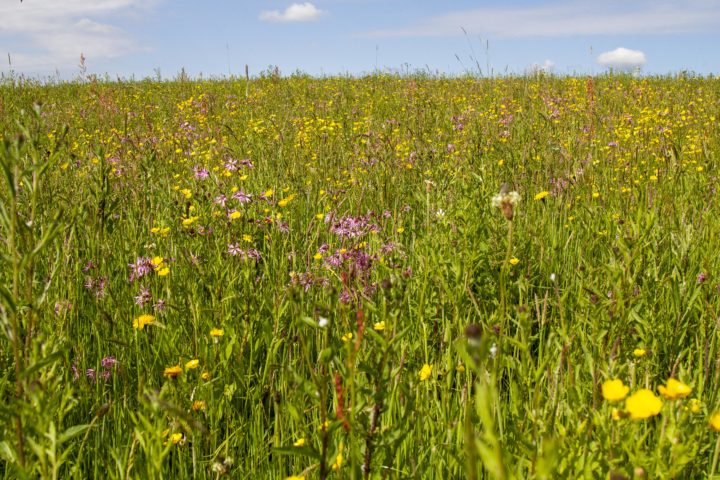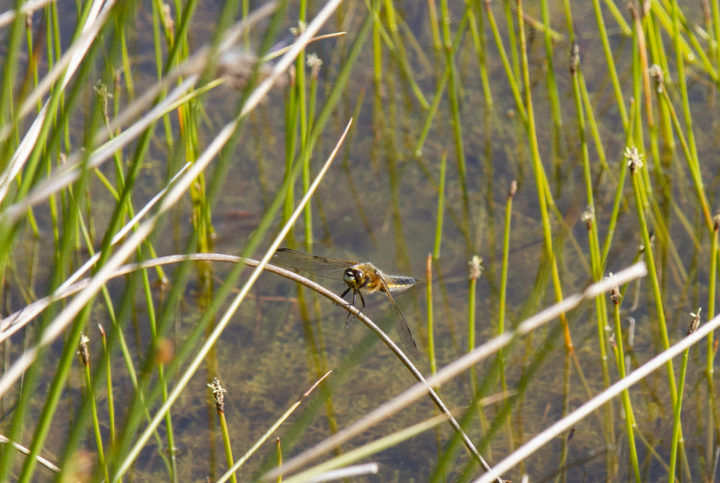June is the month when Daisy Hill dons its coat of many colours and becomes the star of the show. At this time of year the meadows come into their own and the air is filled with a riot of life and sound.
It starts with the eerily silent fly past of a barn owl in the quiet of the early morning followed by the increasing cacophony of bird song and tseeping of chicks calling for food; the buzzing and whirring of bees as they flit between jewel-hued flowers gorging on nectar; the miniature chainsaw-buzzing of a recently emerged Broad-bodied chaser curiously checking out the human interloper at its green, watery domain – the edges studded with the brightest purple of Northern marsh orchids; and the Exmoor ponies expanding their glossy, brown bellies on the succulent, fresh, new grass.
Interwoven with the grasses are the pink threads of ragged robin, the startlingly yellow, shiny buttercups and the paler-hued yellow rattle. While buried within are hundreds of caterpillars of the Burnet moth fattening up on the red clover in preparation for the moment when they will transform into a flurry of scarlet and black wings.
As I write this, June has morphed into March as the heavens drench everything with torrents of water and temperatures have plummeted. But the sun will soon return, and the exuberant, industrious life of the meadow will resume with increased energy replenished by the much-needed rain.
By Vivien Kent

